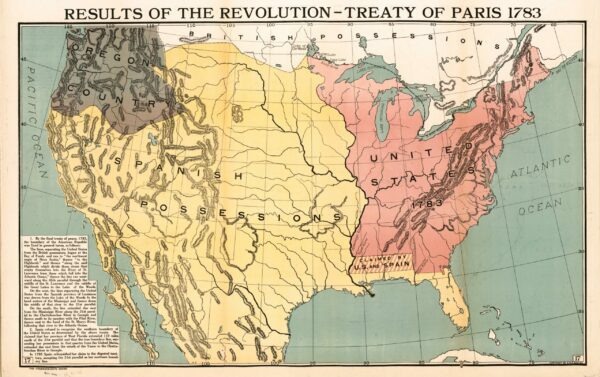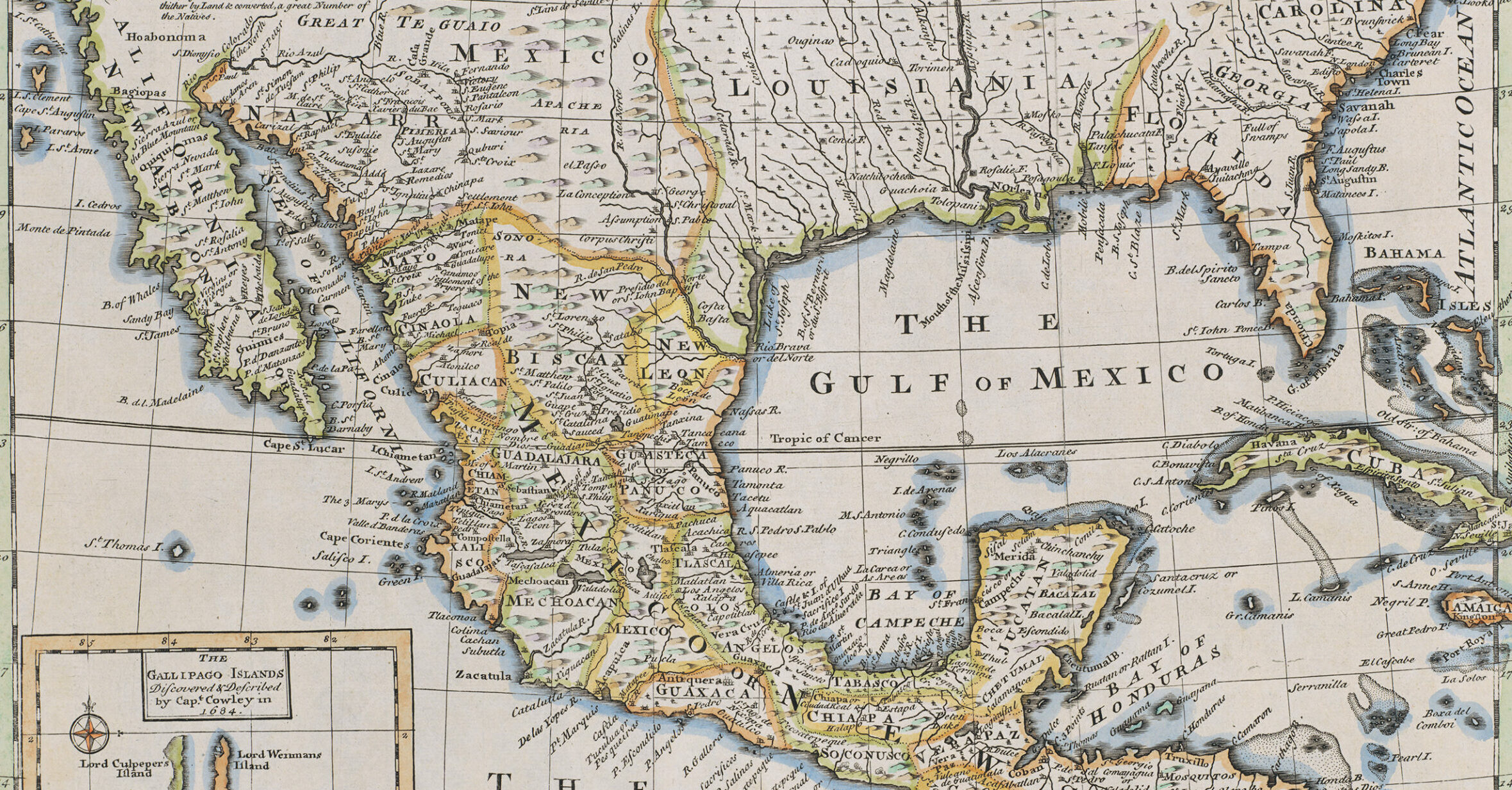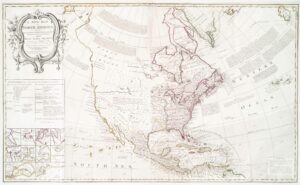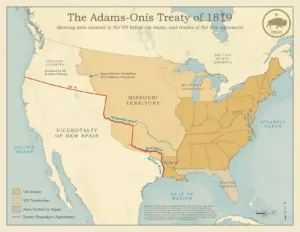Text adapted from the magazine The Hispanic Roots of the United States published by of Asociación Cultural Héroes de Cavite. The magazine is free to download and we encourage you to read it and share it!
In the intricate tapestry of North American history, the narrative of Hispanic Monarchy US Shared Borders stands out, tracing the ebb and flow of territorial lines and diplomatic ties. This story begins with the Treaty of Paris of 1763, which concluded the Seven Years’ War, a global conflict that reshaped continents. France, in this treaty, ceded Louisiana to Spain, compensating for the loss of Florida, marking a pivotal moment in the history of Hispanic Monarchy US Shared Borders.
Great Britain, despite emerging victorious, found its economy in shambles. To recuperate, it raised taxes in its American colonies, sparking widespread unrest. The Royal Proclamation of 1763, aimed at stabilizing the regions west of the Appalachian Mountains, inadvertently set in motion events that would further impact the Hispanic Monarchy US Shared Borders. This proclamation prohibited colonization beyond these mountains, intending to prevent depopulation along the Atlantic coast and mitigate conflicts with Native American tribes.
Prominent figures like George Washington and Thomas Jefferson, who had acquired land in these western territories, saw their interests directly affected by this prohibition. This restriction, coupled with other grievances, catalyzed the insurrection of 1775, with both France and Spain throwing their support behind the insurgents, intricately weaving into the saga of Hispanic Monarchy US Shared Borders.
The Treaty of Paris of 1783, which recognized the independence of the Thirteen Colonies, also returned Florida to Spain, altering the Hispanic Monarchy US Shared Borders once again. However, Spanish territorial claims on the eastern bank of the Mississippi and navigation rights on this river were overlooked, underscoring the complexities surrounding these borders.

The American portion of the Viceroyalty of New Spain in 1783. The Captaincy General of the Philippines, which included the Philippines, Guam and other islands under Spanish sovereignty in the Pacific, was also part of the Viceroyalty of New Spain.
After years of fruitless negotiations, the Treaty of San Lorenzo de El Escorial was signed in 1795, defining the border between the United States and northern Florida. This treaty, ratified by George Washington and King Charles IV of Spain, was a crucial moment in the history of the Hispanic Monarchy US Shared Borders, delineating Louisiana’s border along the Mississippi River. Here, Spain ceded much of what it gained during the war, agreeing to free navigation on the river for both Americans and Spaniards.
In 1803, the Third Treaty of San Ildefonso saw Spain ceding Louisiana back to France, which promptly sold it to the United States. This transfer, challenged by Spanish diplomacy as null due to Napoleon’s failure to adhere to the agreed-upon conditions, marked another significant shift in the Hispanic Monarchy US Shared Borders.
The United States’ westward expansion in the following years brought new grievances and territorial conflicts with Spain, further influencing the Hispanic Monarchy US Shared Borders. The Adams-Onís Treaty, signed in 1819 and ratified in 1821, fixed new borders between the two nations. This treaty, a culmination of negotiations led by Secretary of State John Quincy Adams and Luis de Onís, representative of Fernando VII, marked a pivotal moment in the history of the Hispanic Monarchy US Shared Borders.
On the eve of Mexico’s independence, a substantial part of what is now the United States was still recognized as Spanish territory. But for Spain, this treaty represented the final chapter in a story that had begun 300 years earlier, shaping the landscape of the Hispanic Monarchy US Shared Borders that we recognize today.
Throughout this narrative, it’s crucial to understand that ‘Spain’ often refers to the Spanish or Hispanic Monarchy in a broader sense. This empire’s inhabitants, Spaniards, hailed from diverse origins, including America, Asia, and mainland Spain. They played integral roles in the events that shaped the Hispanic Monarchy US Shared Borders.
The territory known as Florida was divided by the British into East and West Florida. East Florida roughly corresponded to the present-day state of Florida, with St. Augustine as its capital, while West Florida covered the southern regions of present-day Alabama and Mississippi, with Pensacola as its capital. This division is a testament to the shifting nature of the Hispanic Monarchy US Shared Borders.
Understanding the French and Indian War, the North American theater of the Seven Years’ War, is also crucial. This conflict set the stage for the subsequent treaties and agreements that would redefine the Hispanic Monarchy US Shared Borders.
As we reflect on these shared, changing borders, it becomes evident how deeply interconnected the histories of Spain and the United States are. The narrative of the Hispanic Monarchy US Shared Borders is not just a tale of lines on a map but a story of peoples, cultures, and events that have indelibly marked the continent of North America.
Share this article
On This Day
- 1552 Battle of Bicocca.
- 1565 Miguel López de Legazpi founds Cebu as Villa de San Miguel.
- 1806 María Cristina de Borbón Dos Sicilias was born.
History of Spain
26 August 2020
27 January 2021
Communism: Now and Then
23 December 2022
28 July 2021








